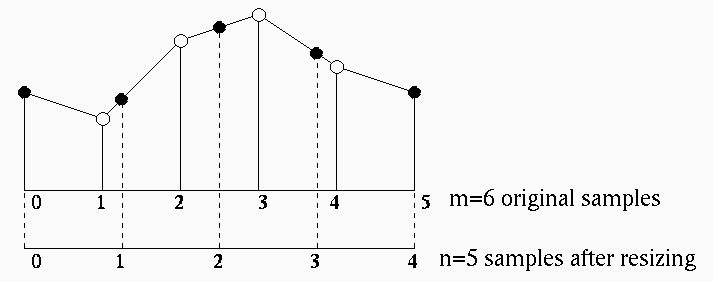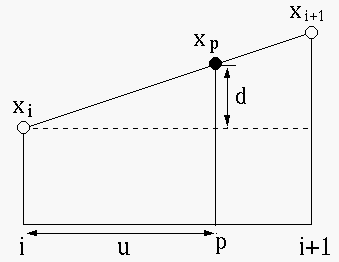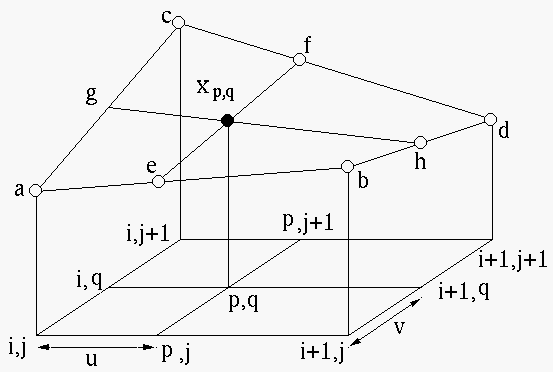It is obviously more desirable to arbitrarily resize a given image (enlarge
or reduce the image proportionally or non-proportionally). We first consider
converting a one-dimensional m-sample input
![]() into an n-sample output
into an n-sample output
![]() , where
, where ![]() is the
desired size of the output, which may be either smaller or greater than
is the
desired size of the output, which may be either smaller or greater than ![]() ,
i.e., the scaling factor
,
i.e., the scaling factor ![]() can be either greater or smaller than 1 (for
either enlargement or reduction). The method is essentially a two-step process
of linear interpolation and re-sampling.
can be either greater or smaller than 1 (for
either enlargement or reduction). The method is essentially a two-step process
of linear interpolation and re-sampling.

Represent each index
![]() of the output as a floating
point number
of the output as a floating
point number ![]() in the range of
in the range of
![]() of the input indices:
of the input indices:
Find the fraction
![]() and
and ![]() as shown in the figure:
as shown in the figure:


This method of linear interpolation can be generalized from 1-D to 2-D bilinear interpolation for image resizing.
Similar to the 1D case, we first convert the integer indices ![]() of each
pixel of the output image of the desired size into real coordinates
of each
pixel of the output image of the desired size into real coordinates ![]() in the range of the input image. Then the corresponding fractions
in the range of the input image. Then the corresponding fractions ![]() and
and ![]() in both horizontal and vertical dimensions can be found:
in both horizontal and vertical dimensions can be found:
Find value ![]() as the bilinear interpolation of its four immediate neighbors
in the input image, represented by
as the bilinear interpolation of its four immediate neighbors
in the input image, represented by

The bilinear interpolation is carried out in two levels of linear
interpolations. We first find the two interpolations of ![]() ,
, ![]() and
and ![]() ,
, ![]() along the dimension with index
along the dimension with index ![]() :
:


